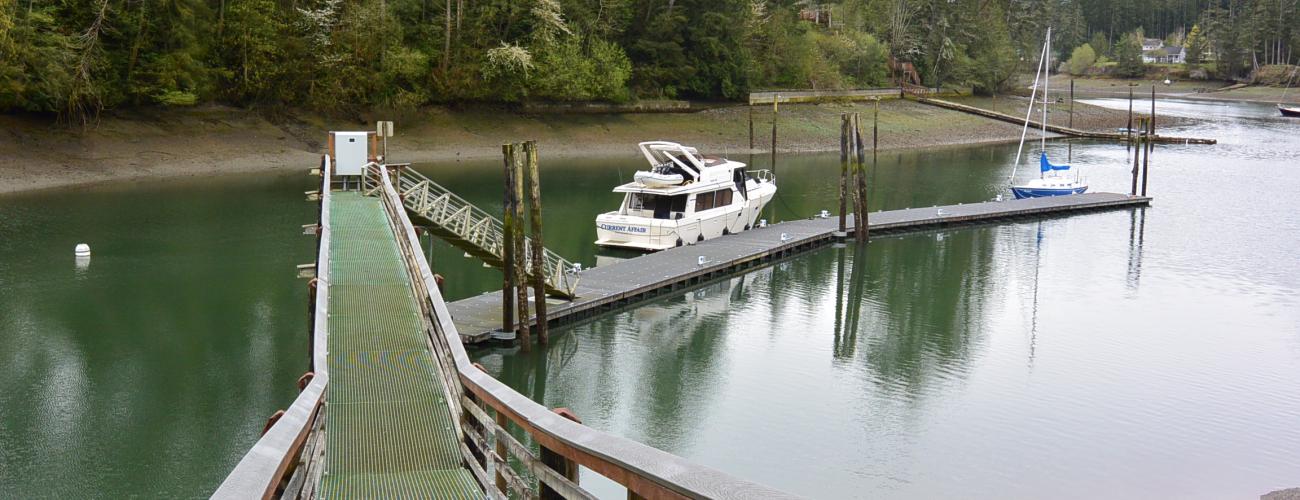Jarrell Cove State Park History
The Bay of Despond
Today’s Jarrell Cove State Park was covered by glacial ice during the most recent ice age. The fingerlike waterways of South Puget Sound including the inverted Y shape of Jarrell Cove and Pickering Passage outside its entrance were excavated by highly pressurized meltwater streams that developed as the thousands-of-feet-thick ice began to melt. The park’s namesake cove features deep waters and a tall tidal range. Low tides yield extensive muddy banks. This prompted the US Coast and Geodetic Survey in 1879-80 to note the cove as the “Bay of Despond,” after the mythical sucking bog in John Bunyan’s The Pilgrim’s Progress.
Tidal Range
Tidal ranges in Puget Sound increase with distance from the estuary’s entrance at Admiralty Inlet, reaching their highest values in the intricate waterways between Olympia and Harstine Island. At Jarrell Cove, the range between highest tides and lowest tides reaches over 19 feet. The heightened tidal range is essentially the extra “slosh” as an incoming tide runs up against the end of the basin. Spring tides increase the range due to additional gravitational pull when the sun and moon are aligned (when the moon is new or full). King tides occur during a spring tide that happens when the moon is at its closest approach to the Earth, compounding the gravitational effect. Jarrell Cove State Park is a great place to watch these tidal variations.
Indigenous Lands
Jarrell Cove State Park lies within the traditional territories of Coast Salish Indigenous people whose present-day descendants include members of the Squaxin Island Tribe. For thousands of years the waters around Harstine Island have provided habitat for a diverse community of life that forms the basis of their cultures.
Local tribes ceded ownership of the area to the US federal government under duress in the Treaty of Medicine Creek in 1854, keeping rights to harvest natural resources in their usual and accustomed places, including the waters around Harstine Island. Government land surveys were completed in 1857, and the land in today’s Jarrell Cove State Park was conveyed into private ownership in 1895 as a part of the Northern Pacific Railroad Land Grant. The US Congress had approved the grant in 1864, which eventually conveyed nearly 40 million acres of public domain lands to financially assist the company in the construction of railroad lines into the western states. The Northern Pacific (NP) sold the parcel in 1906, reserving the mineral rights. Adjacent property at the head of the cove was homesteaded by Robert and Philura Jarrell in 1886. Robert began a logging business and Philura operated the Hartstene Island post office (one of two on the island at the time) from their home. Their name eventually superseded the earlier designation of the cove as the Bay of Despond.
What’s In a Name?
Harstine Island is named for Henry J. Hartstene, a US naval officer who accompanied the Wilkes Expedition on its world voyage of hydrography and exploration in 1838-1842. Commander Charles Wilkes named the island for Hartstene even though he had left the expedition before it arrived in Puget Sound. Considerable confusion surrounded the spelling of Hartstene for many years. Island residents began a campaign to standardize the name of the island in 1994. In June 1995 the Washington State Board of Geographic Names affirmed the spelling as “Harstine,” and it was approved by the US Board of Geographic Names in November 1997.
Henry Hartstene continued his naval career. He was lauded in 1855 when he led an expedition into the Arctic to rescue the ships sent to search for the Franklin Expedition. He later surveyed the route of the first Atlantic telegraph cable, before resigning to join Confederate forces in his South Carolina home during the Civil War. He suffered from mental illness, was discharged in 1862, and died in Paris in 1868.
Making a Park
The Washington State Parks and Recreation Commission purchased 38 acres of the former NP grant land to create Jarrell Cove State Park in 1953 as a boat moorage site with limited onshore facilities. Additional property was purchased in 1969 to provide campsites and access from a county road.
On August 9-10, 1980, 12 members of the US Naval Reserve Construction Battalion Division volunteered to build a new entrance road into Jarrell Cove State Park. Arriving with their own dump trucks, loaders and a D7 bulldozer, they cleared and readied 1,350 feet of road for rolling and grading with 120 yards of fill material. The unit returned the following spring to complete the road, allowing easy access to the park by car or boat.
Sharing the histories of Washington’s state parks is an ongoing project. Learn more here.

